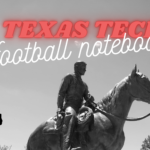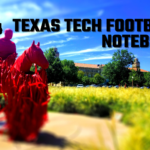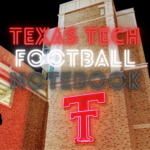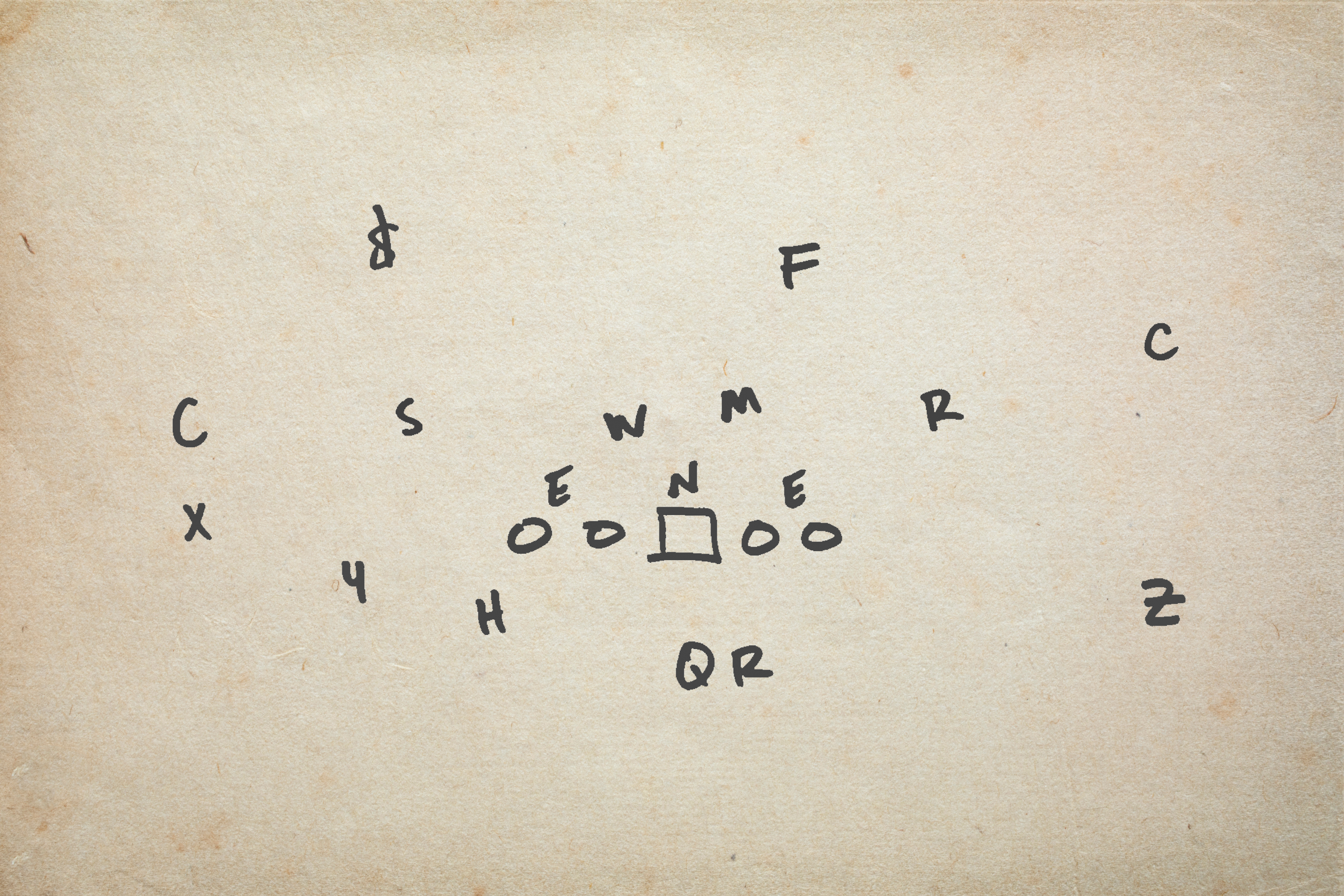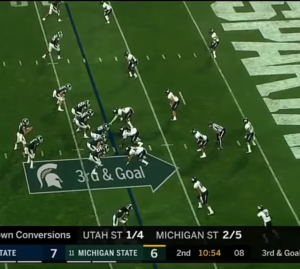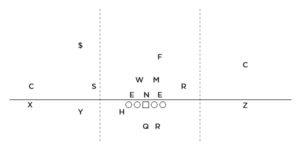As we begin to get ready for spring football, I wanted to orient everyone to the new defensive scheme brought over by Keith Patterson. Patterson, as you know, was at Utah State in 2018, and most notably Arizona State from 2014-2017 and West Virginia 2012-2013.
He will be bringing an aggressive and up-and-coming defensive scheme that we are starting to see pop up all over the country. Iowa State rolled out a similar scheme in the middle of 2017 and found a lot of success. Texas followed suit. Other notable programs around the country using principles from this defense would be Georgia and San Diego State.
Vernacular
Let’s start by looking at some of the terminology we’ll be using to identify the positions, formations, and scheme.
Patterson will be installing a version of a 3-3-5 defense, meaning three defensive linemen, three linebackers, and five defensive backs. This is not, however, a 3-3 Stack defense where there are three traditional linebackers aligned directly behind the three down linemen. Patterson’s defense utilizes two hybrid positions; a defensive end/linebacker (rush end), and a linebacker/safety.
There are a few names for the scheme Patterson is installing, and the names are based around the alignment of the defensive line. One of those names is the 4-0-4. Those numbers coordinate with the numbered gaps or defensive linemen techniques, where 0 is directly over the center, 1 is the first gap between the center and guard (in both directions), 2 is over the guard, 3 between the guard and tackle, 4 directly over the tackle, and so on. So, the defensive front will include two defensive ends aligned in front of the tackles, and a defensive tackle or nose guard over the center.
Another, more specific term would be a 4i or “tite” front. These both indicate that the defensive ends will technically be aligned over the tackles, but more shaded to the inside eye (get the i?) of the tackle. It’s a symmetrical front that doesn’t worry about switching sides based on the offensive strength. Without concern to the offensive formation strength, both defensive ends will be your prototypical “strongside” defensive ends that have a larger body than a weakside or rush end.
Here’s a typical defensive formation and alignment Utah State used in 2018. This alignment came in their matchup versus Michigan State.
Let’s look at the individual positions and how they’re labeled in the diagram above.
E = defensive end
N = nose tackle
R (Raider) = hybrid DE/LB
W = will linebacker
M = middle linebacker
S = hybrid LB/safety
C = cornerbacks
F = free safety
$ = strong safety
Body Types
Let’s look at the body types that Patterson and similar defenses have employed with the various positions around the formation and how that might look at Texas Tech.
Defensive line
As mentioned above, the defensive ends will be your bigger, strongside defensive ends. At Utah State, these guys were 6-foot-4, 265 pounds, and 6-foot-1, 280 pounds. For Texas Tech, I would imagine your starters would come from the group of junior Eli Howard (6’4, 270), sophomore Nelson Mbanasor (6’3, 280), and senior Lonzell Gilmore (6’3, 280). Other body types that would currently fit here – depending on what the coaching and strength staffs determine – would be junior Houston Miller (6’4, 265), senior Quentin Yontz (6’2, 270), junior Noah Jones (6’3, 260), and redshirt freshman John Scott, III (6’3, 275).
Nose tackle is the same to what David Gibbs wanted. From my understanding, despite lining up as a 0-technique, he would still only be responsible for one of the gaps alongside the center (more on this in part 2). Think your biggest men here – senior Broderick Washington (6’3, 305), junior Joseph Wallace (6’1, 315), and junior Nick McCann (6’2, 310).
The starting defensive line will average 6-foot-2, 290 pounds. Having just three down linemen won’t cost you any size here. Scheme accounts for some other top-of-mind weaknesses (again, more on this in part 2).
Linebacker
Again, very similar to what Texas Tech has already been running. The two linebackers in the middle of the field are similar body types and roles are dependent on their strengths. Utah State’s linebackers were 6-foot-1, 230 pounds and 6-foot-2, 235 pounds. At Tech, there will be a little bump in size in those positions from the projected starters of senior Jordyn Brooks (6’1, 240) and junior Riko Jeffers (6’2, 245).
Hybrids
These are a little trickier to project, but we’ll continue to compare to Utah State’s 2018 squad.
The hybrid defensive end linebacker for the Aggies was 6-foot-5 and 230 pounds. You don’t have anyone on campus like this. Your closest fit may be San Diego State transfer, sophomore (and now eligible) Mark Brown (6’3, 225). Brown played more of a weakside, rush defensive end in high school in Ft. Worth. Skills wise, he would seem to align. Redshirt freshman Xavier Benson (6’3, 200) would be another fit. After that, you would probably have to look back into the linebackers to fill that role with possibly junior Brayden Stringer (6’2, 225).
The other hybrid player, a linebacker safety is even trickier to project, partly because I don’t know what safeties this team has after losing last year’s starters and not seeing much depth behind them. You have a roster full of corners. The Utah State player here was 6-foot-1 and 210 pounds. If Octavious Morgan returns and figures to be a contributor, his size (heaviest of the DBs at 205) might be what moves him into this role. Senior Justus Parker (6’, 205) might also play here and allow some flexibility in the scheme.
Defensive Backs
I’m not sure who plays where, but you have some significant experience returning from 2018 at all these positions. These aren’t unique to Patterson, but it will be interesting to see who Patterson, Julius Brown and Kerry Cooks put out there. Your returners include seniors Douglas Coleman, III (6’1, 190) and Desmon Smith (6’2, 190), junior Demarcus Fields (6’, 200), and then some untested sophomores in Quincy Addison (6’1, 190), John Davis, Jr. (6’1, 185), Adrian Frye (6’1, 190), and Adam Beck (6’2, 185), with Frye having the most experience.
RELATED – Scholarship Eligibility Charts: The Defensive Backs | The Defensive Line | The Linebackers
Spring ball will go a long way into answering some of these questions about who plays where. We’ll definitely be looking to see how Patterson and Co. mold the existing players and his scheme for 2019.

